大家好,我是若川。最近组织了源码共读活动,感兴趣的可以点此加我微信 ruochuan12 参与,每周大家一起学习200行左右的源码,共同进步。同时极力推荐订阅我写的《学习源码整体架构系列》 包含20余篇源码文章。
Vue3 发布已经有一段时间了,它采用了新的响应式系统,而且构建了一套全新的 Composition API。Vue 的周边生态都在加紧适配这套新的系统,官方的状态管理库 Vuex 也在适配中,为此官方提出了一个 Vuex 5 的全新提案。

支持两种语法创建 Store:
Options Api和Composition Api;删除
mutations,只支持state、getters、actions;模块化的设计,能很好支持代码分割;
没有嵌套的模块,只有 Store 的概念;
完整的
TypeScript支持;
在这个提案下方,有个评论很有意思。简单翻译一下:

好巧不巧,Vuex5 的提案,与 Pinia 实现的功能不能说毫无关系,只能说一模一样,今天的文章就来给大家介绍一下这个菠萝。
安装
在现有项目中,用过如下命令进行 Pinia 模块的安装。
# yarn
yarn add pinia@next
# npm
npm i pinia@next安装完成后,需要在 Vue3 项目的入口文件中,进行导入安装。
// main.js
import { createApp } from 'vue'
import { createPinia } from 'pinia'
import App from './App.vue'// 实例化 Vue
const app = createApp(App)
// 安装 Pinia
app.use(createPinia())
// 挂载在真实 DOM
app.mount('#app')上手
要使用 Pinia 的话,只需要定义一个 store,然后在用到该数据的地方进行导入。
定义 Store
import { defineStore } from "pinia"// 对外部暴露一个 use 方法,该方法会导出我们定义的 state
const useCounterStore = defineStore({// 每个 store 的 id 必须唯一id: 'counter',// state 表示数据源state: () => ({count: 0}),// getters 类似于 computed,可对 state 的值进行二次计算getters: {double () {// getter 中的 this 指向👉 statereturn this.count * 2},// 如果使用箭头函数会导致 this 指向有问题// 可以在函数的第一个参数中拿到 statedouble: (state) => {return state.count * 2}},// actions 用来修改 stateactions: {increment() {// action 中的 this 指向👉 statethis.count++},}
})export default useCounterStore除了使用上述类似 vuex 的方式来构建 state,还可以使用 function 的形式来创建 store,有点类似于 Vue3 中的 setup()。
import { ref, computed } from "vue"
import { defineStore } from "pinia"// 对外部暴露一个 use 方法,该方法会导出我们定义的 state
const useCounterStore = defineStore('counter', function () {const count = ref(0)const double = computed(() => count.value * 2)function increment() {count.value++}return {count, double, increment}
})export default useCounterStore使用 Store
前面也介绍过,Pinia 提供了两种方式来使用 store,Options Api 和 Composition Api 中都完美支持。
Options Api
在 Options Api 中,可直接使用官方提供的 mapActions 和 mapState 方法,导出 store 中的 state、getter、action,其用法与 Vuex 基本一致,很容易上手。
import { mapActions, mapState } from 'pinia'
import { useCounterStore } from '../model/counter'export default {name: 'HelloWorld',computed: {...mapState(useCounterStore, ['count', 'double'])},methods: {...mapActions(useCounterStore, ['increment'])}
}Composition Api
Composition Api 中,不管是 state 还是 getter 都需要通过 computed 方法来监听变化,这和 Options Api 中,需要放到 computed 对象中的道理一样。另外, Options Api 中拿到的 state 值是可以直接进行修改操作的,当然还是建议写一个 action 来操作 state 值,方便后期维护。
// Composition Api
import { computed } from 'vue'
import { useCounterStore } from '../stores/counter'
export default {name: 'HelloWorld',setup() {const counter = useCounterStore()return {// state 和 getter 都需要在使用 computed,这和 Options Api 一样count: computed(() => counter.count),double: computed(() => counter.double),increment: () => { counter.count++ }, // 可以直接修改 state 的值increment: counter.increment, // 可以引用 store 中定义的 action}}
}类型提示
在 Vuex 中,TypeScript 的类型提示做得不是很好,在进行类型推导时,只能找到它的 state。特别是写代码的过程中,代码提示就很不智能。
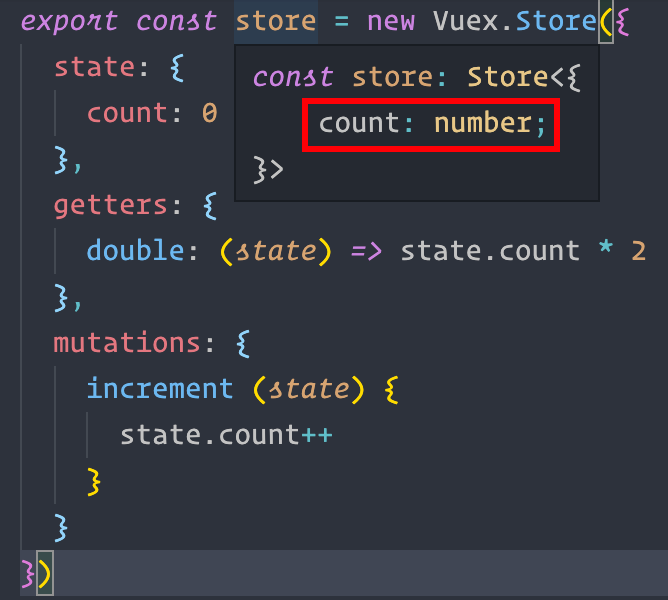
而 pinia,就能推导出定义的所有 state、getter、action,这样在写代码的时候,就会方便很多。
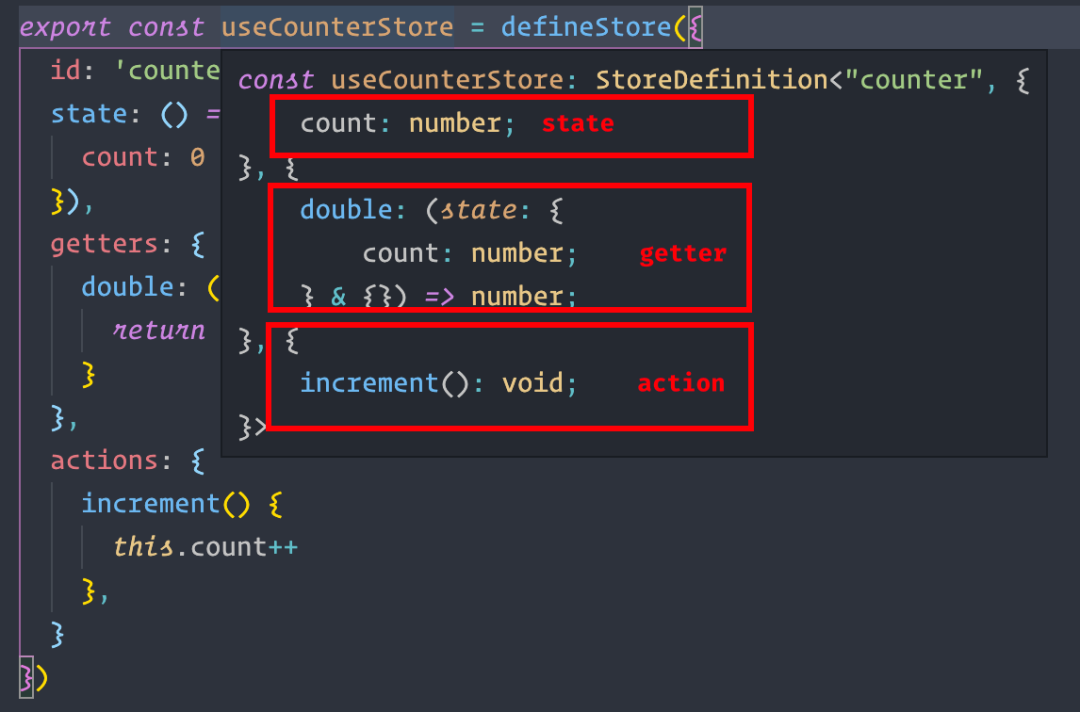
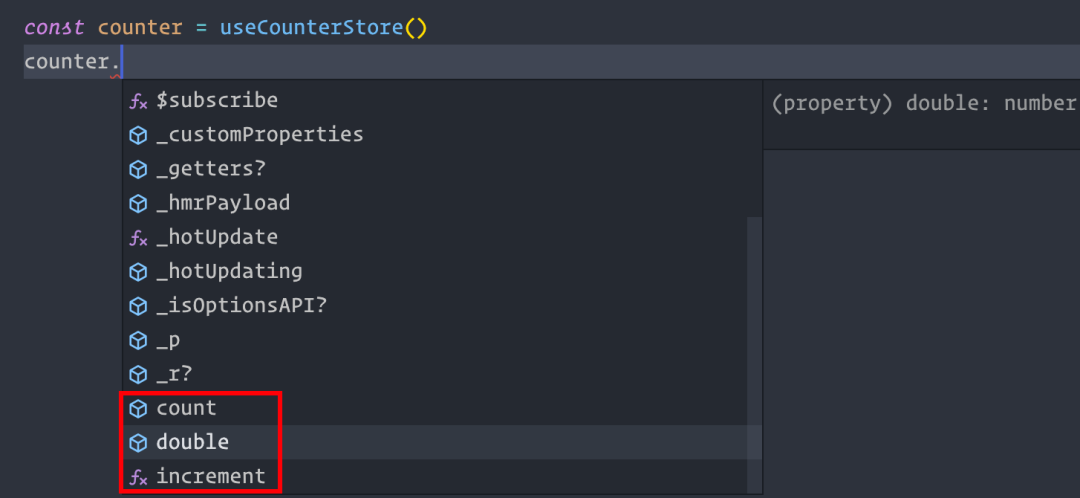
主要是 pinia 通过 TypeScript 进行了十分友好的类型定义,感兴趣的可以看看 pinia 的类型定义文件(pinia.d.ts):
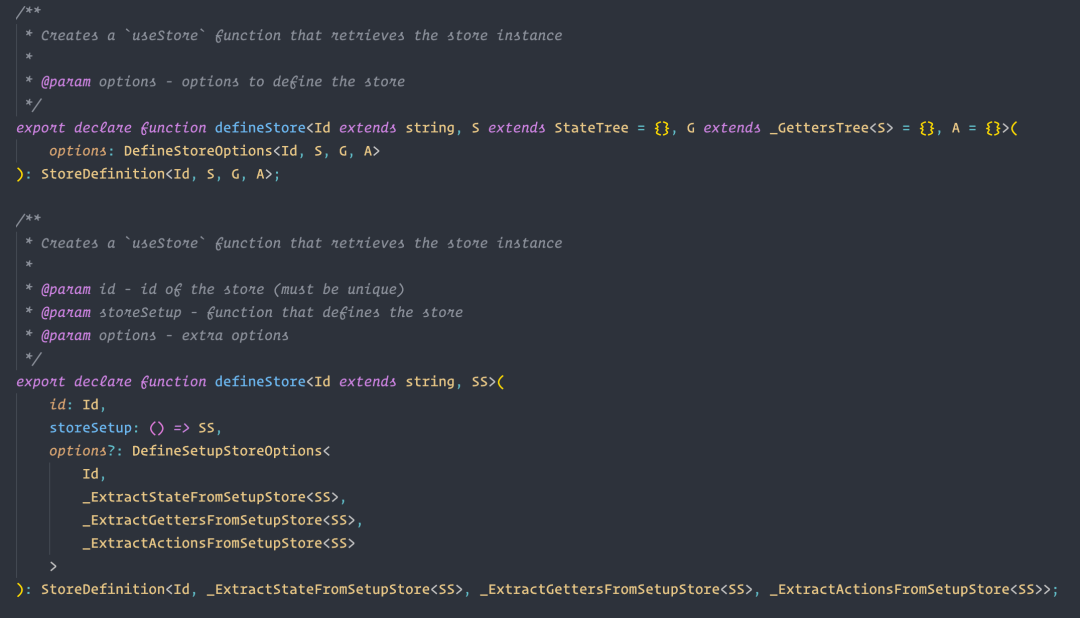
代码分割
由于使用了模块化设计,所有的 store 都能够单独引入,而不是像 vuex 一样,通过 modules 的方式,将所有的 module 挂载到一个 store 上。
假设,我们当前通过 Vuex 创建了一个 Store,这个 Store 下有两个 module,分别是用户模块(User)和商品模块(Goods)。即使当前首页只使用到了用户信息,但是整个 Store 都会被打包到首页的 js chunk 中。

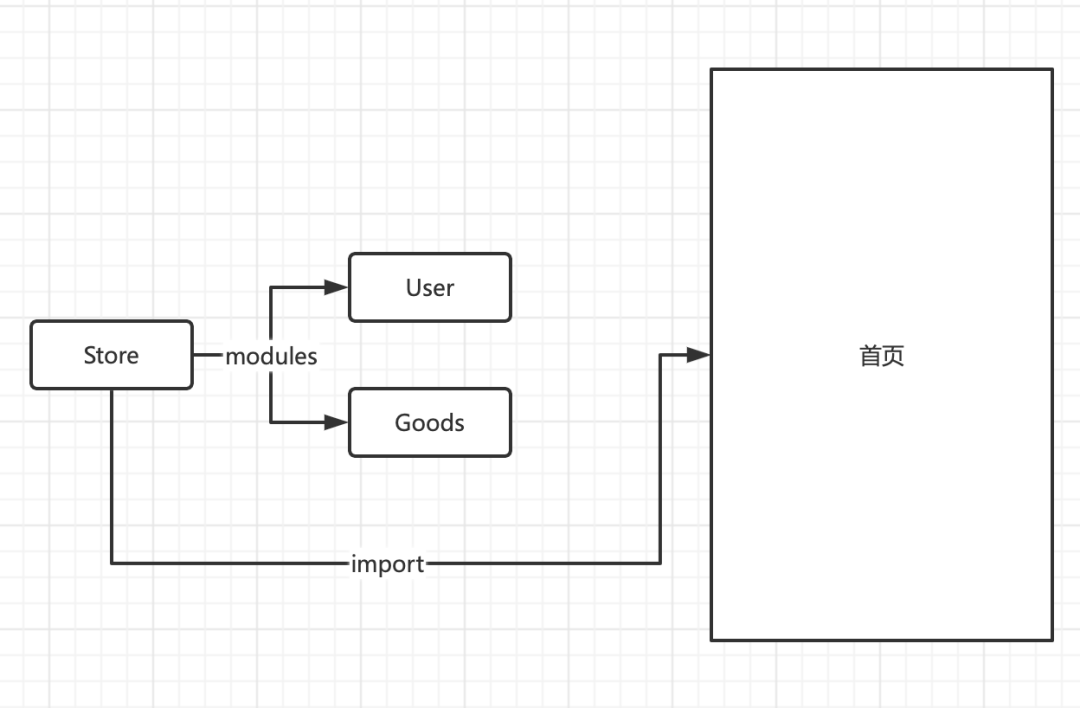
如果我们使用 pinia,我们会使用 defineStore 定义两个 完全是分离状态的 store,两个页面在引入时,也互不影响。最后打包的时候,首页的 js chunk 和商品页的 js chunk 会分别打包对应的 store。
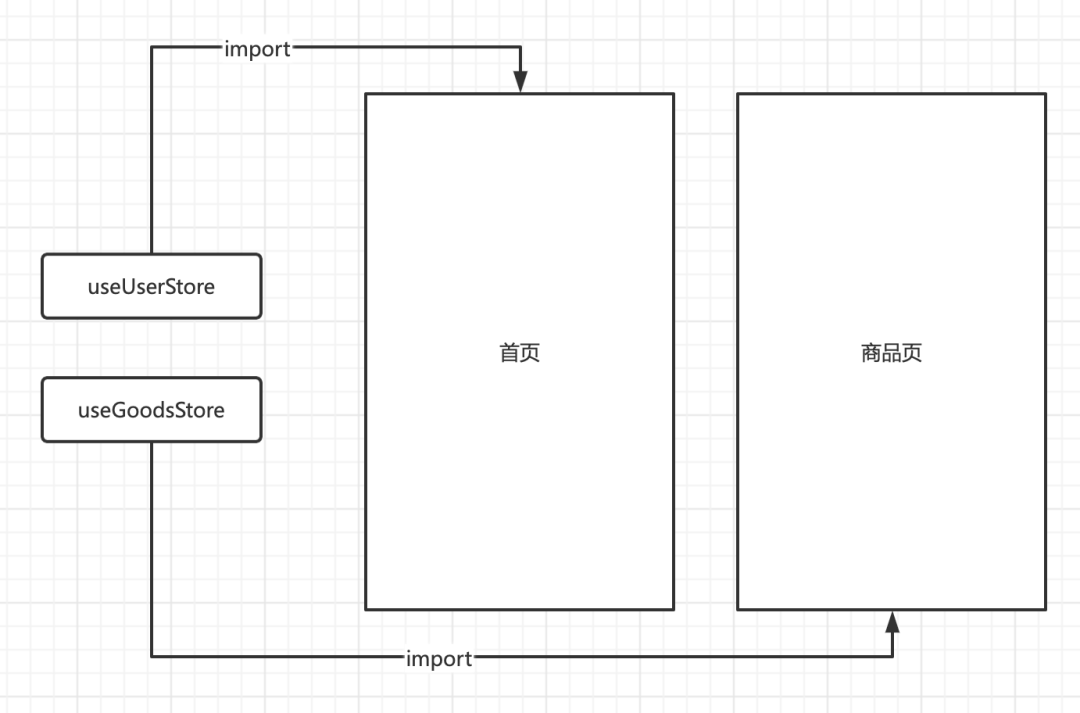
Pinia 的介绍到这里就告一段落了,如果现在有新项目要使用 Vue3 进行开发,推荐无脑使用 Pinia,更加简洁,而且大小仅 1KB。
- END -
················· 若川简介 ·················
你好,我是若川,毕业于江西高校。现在是一名前端开发“工程师”。写有《学习源码整体架构系列》20余篇,在知乎、掘金收获超百万阅读。
从2014年起,每年都会写一篇年度总结,已经写了7篇,点击查看年度总结。
同时,最近组织了源码共读活动,帮助3000+前端人学会看源码。公众号愿景:帮助5年内前端人走向前列。

识别上方二维码加我微信、拉你进源码共读群
今日话题
略。分享、收藏、点赞、在看我的文章就是对我最大的支持~







)
——系统首页设计(上))






![[译] React Hooks: 没有魔法,只是数组](http://pic.xiahunao.cn/[译] React Hooks: 没有魔法,只是数组)



是第一个让我哭泣的VR体验)